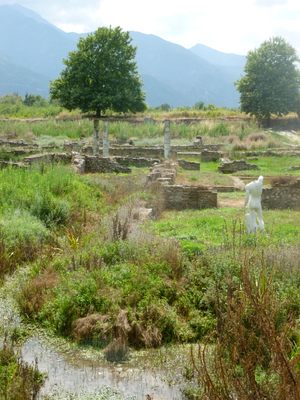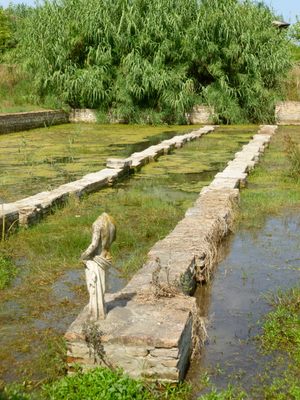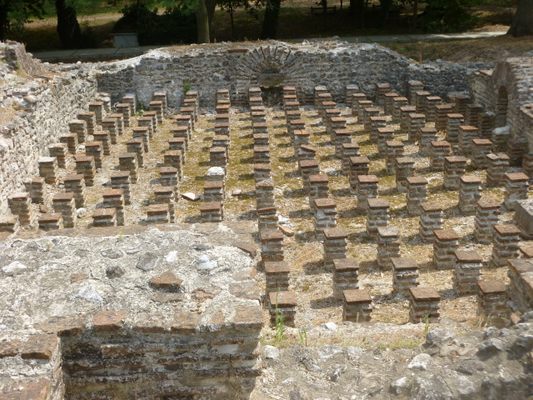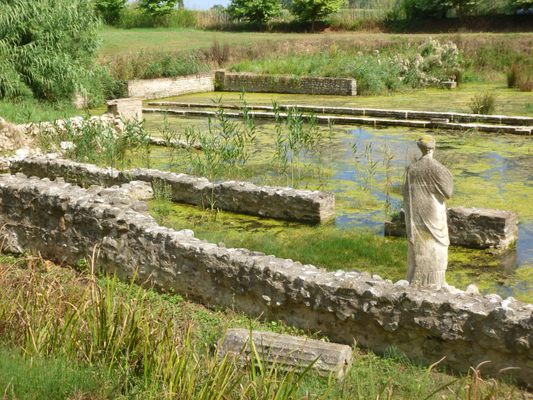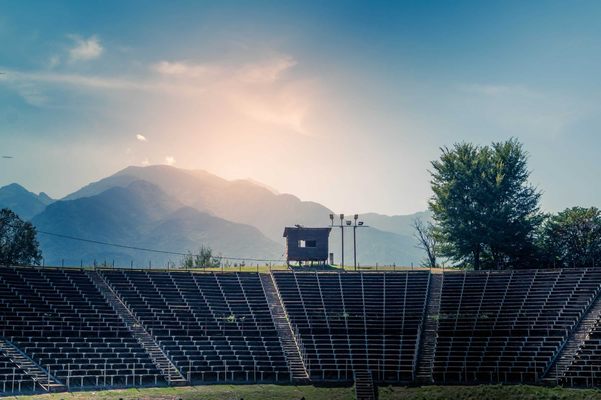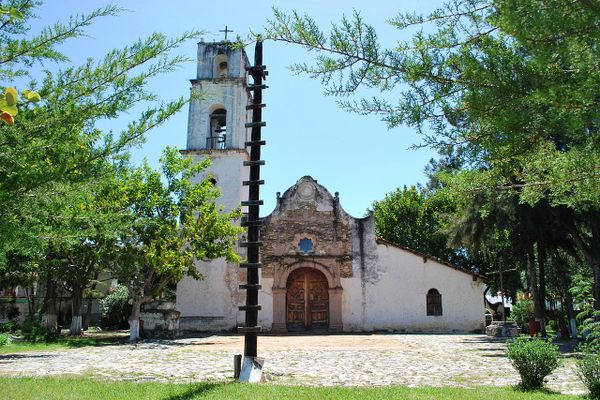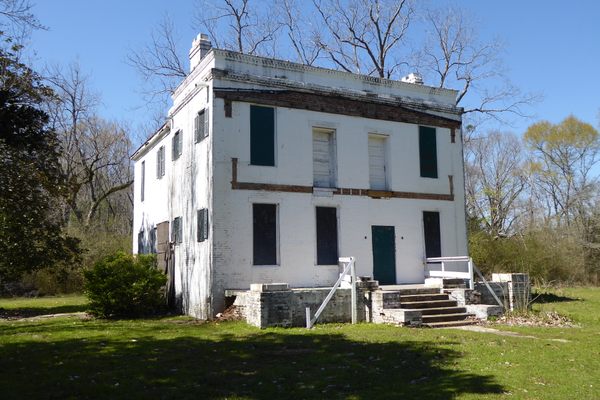About
Situated in view of the legendary Mt. Olympus, the archaeological site of Dion is a particularly watery wonderland among the hot and dry Greek summers.
Half swamp, half ancient city, the site of Dion is a playground for both archaeologists and naturalists. The city once hosted such notables as Alexander the Great, but today it’s lush greenery and ponds are home to a variety of critters. Frogs are by far the most obvious, but there is also an abundance of birds, butterflies, dragonflies, spiders, fish, turtles and weasels hiding among the ruins and greenery.
The archaeological remains are no disappointment either. The site features two theaters, one Greek and one Roman, as well as a Roman bath complex, complete with a well-preserved example of the hypocaust system used to heat the floors. On the other side of the Roman road lies a series of private houses, including the Villa of Dionysus, named for a mosaic depicting the god in his chariot.
The site is home to several sanctuaries as well, to Demeter, Zeus, Isis, and Asklepios. The highlight of these is undoubtedly the sanctuary of the Egyptian goddess Isis. Accessed by a raised walkway, the sanctuary is almost completely submerged. The sanctuary consists of three small temples. In front of the main temple runs two long, parallel walls. This corridor was the entrance to the site and was meant to represent the Nile, in which the goddess’ beloved Osiris drowned. Exploring the flooded sanctuary today, it is easy to imagine the goddess looking sadly out over the great river.
After acting as the sacred seat of Olympian Zeus, then as a Roman colony, and finally as a bishopric in the Christian era, the city was gradually abandoned. In the 19th and 20th centuries, the site was rediscovered and excavations continue to the present day. The city monuments have been restored and left in their original locations, making visitors feel as though they are in a truly forgotten city. Aside from the outdoor site, there is also a museum housing artifacts found during the excavations, including the unique Dion hydraulis, or water organ. An archaeological park in the true sense of the phrase, the marble dotted swamps of Dion are a place to discover many Gods. And frogs. Many frogs.
Related Tags
Community Contributors
Added By
Published
January 13, 2014
